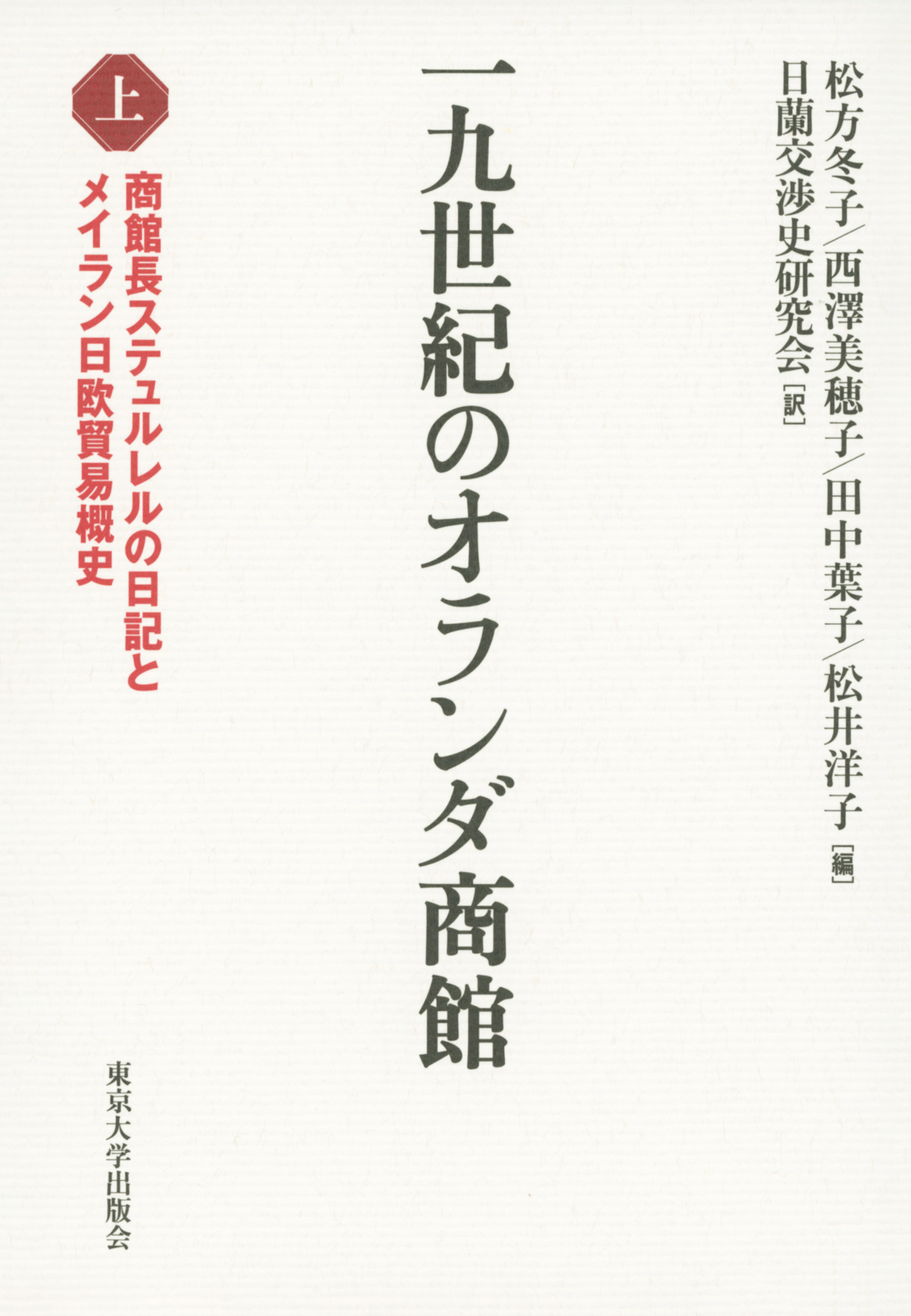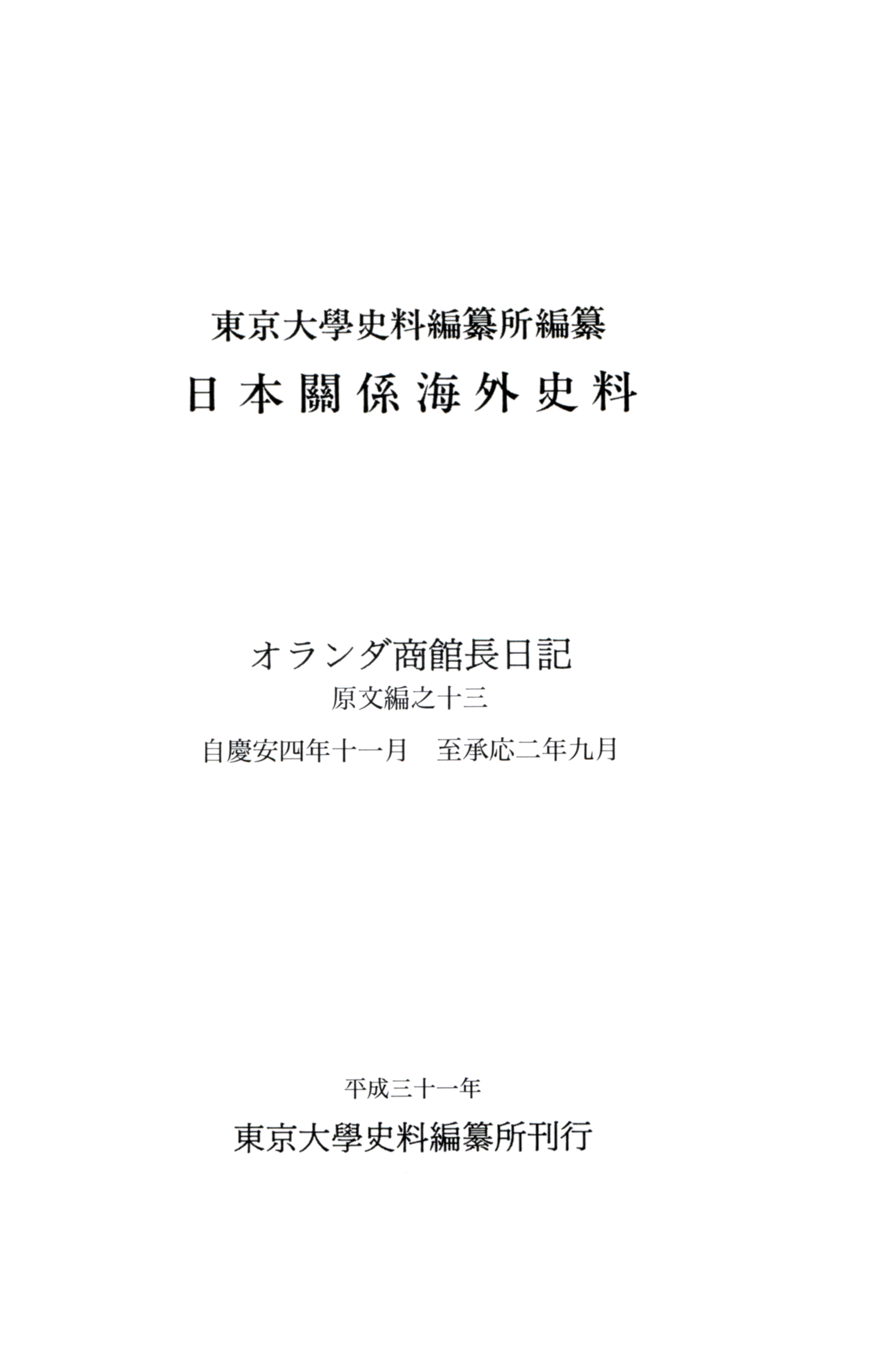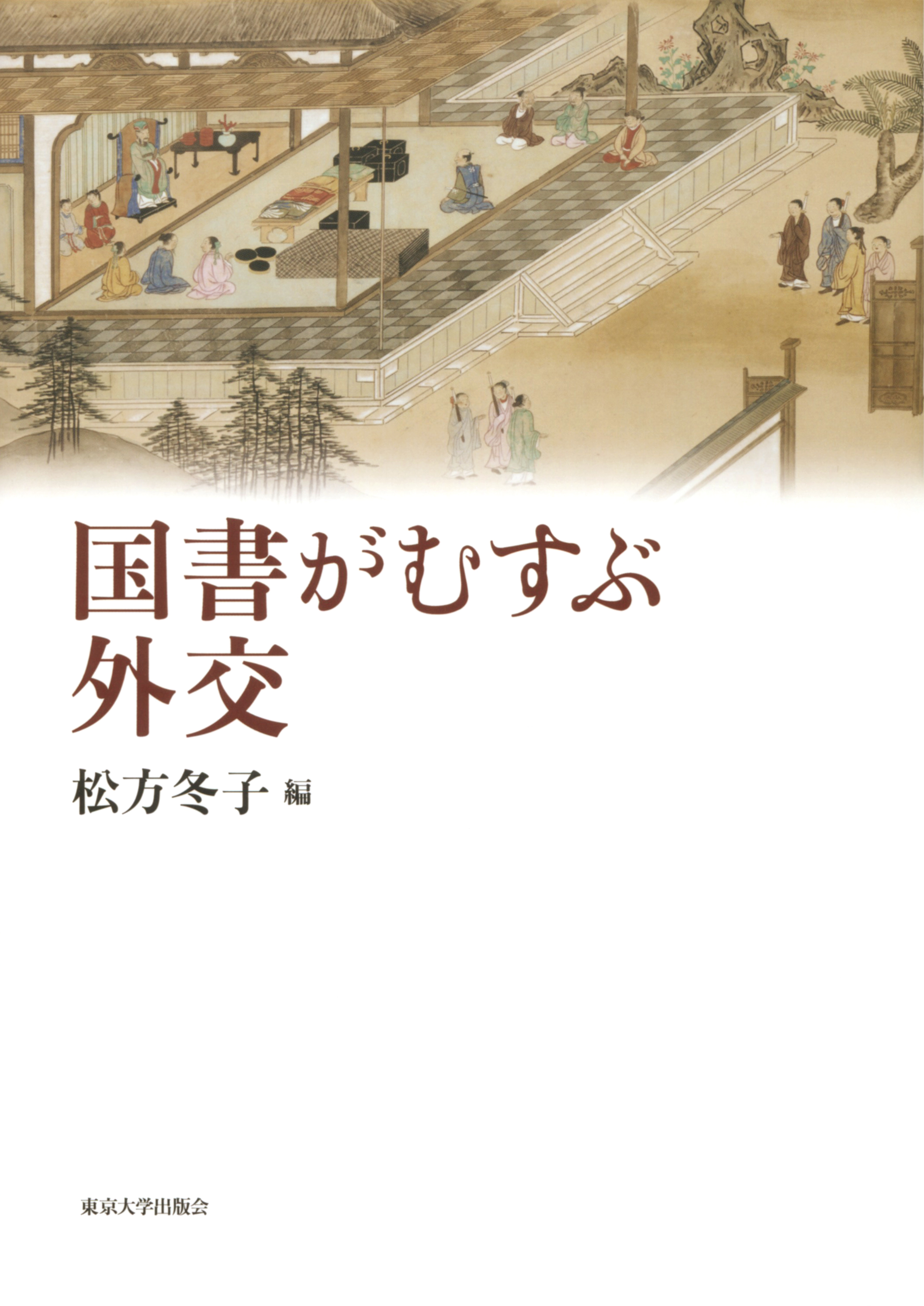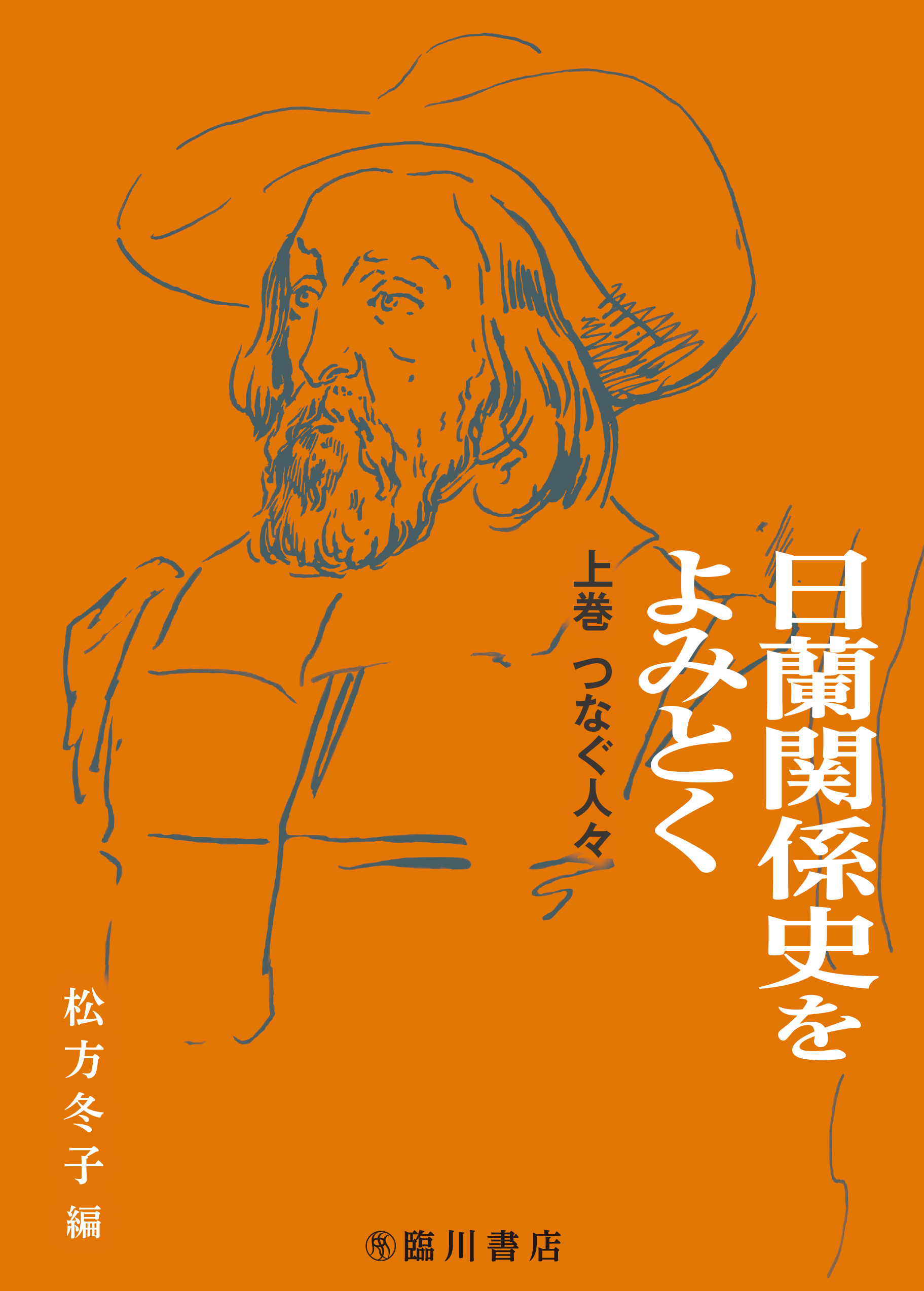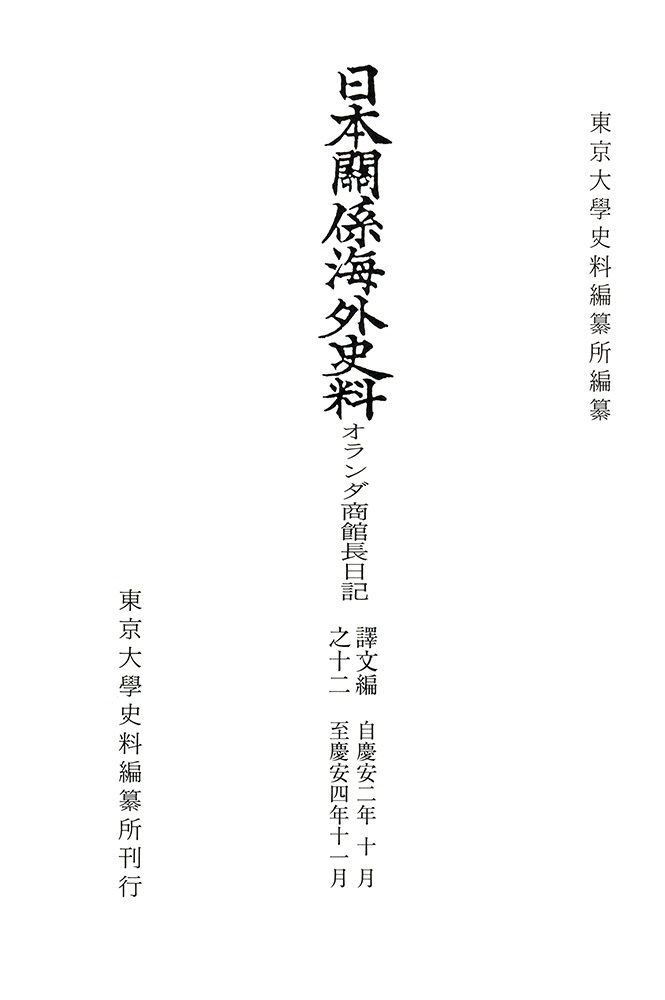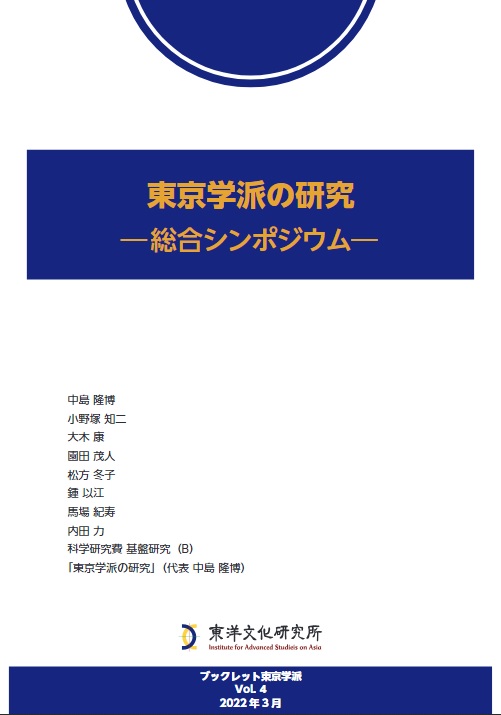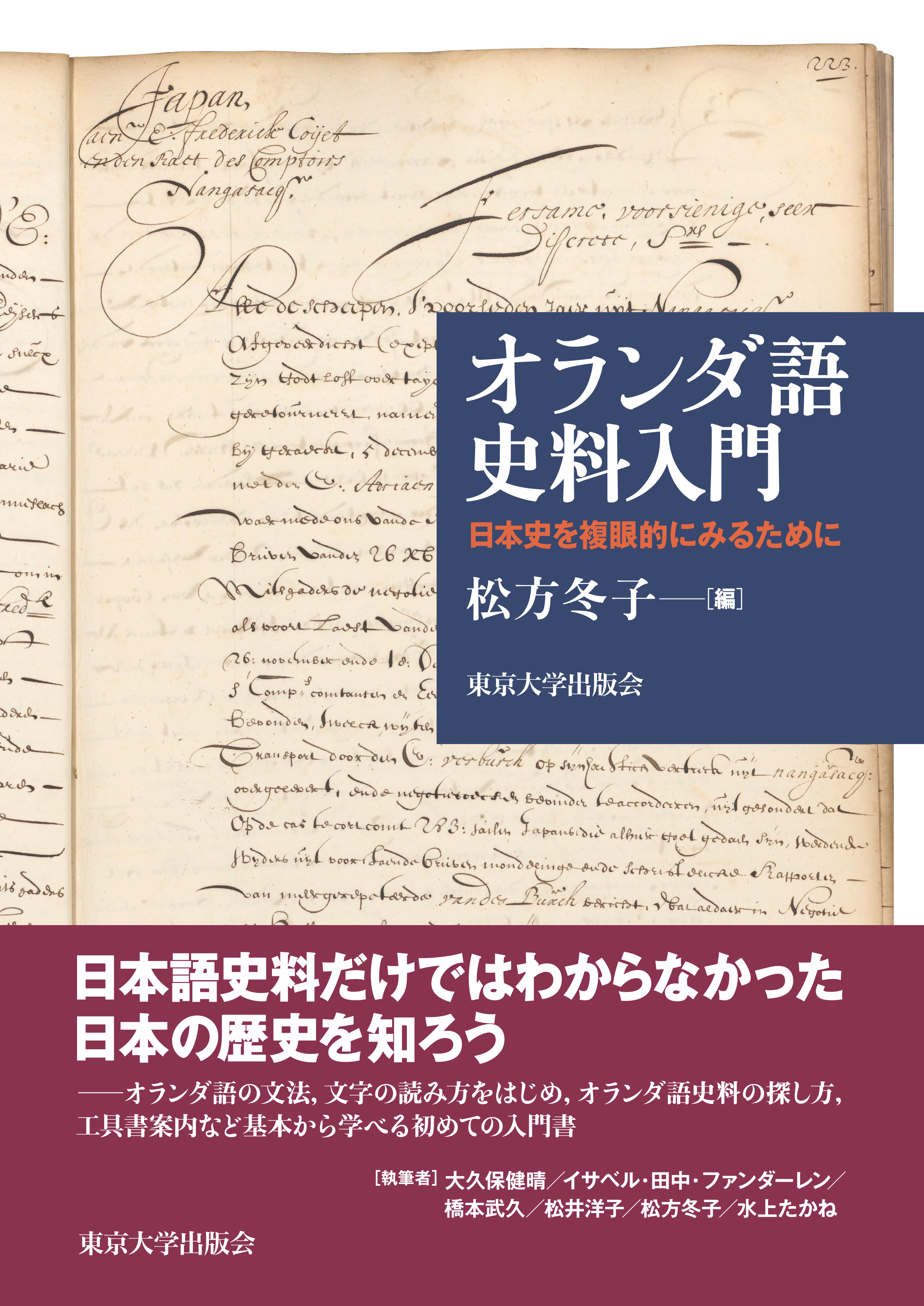
Title
Oranda-go Shiryo Nyumon (An Introduction to Dutch Historical Sources - To Enrich Your Perspectives on Japanese History)
Size
208 pages, B5 format
Language
Japanese
Released
March 30, 2022
ISBN
978-4-13-022027-9
Published by
University of Tokyo Press
Book Info
See Book Availability at Library
Japanese Page
This is the first book introducing the use of Dutch historical sources for studying Japanese history.
In recent years, on-line accessibility of historical sources has been advancing all over the world. Almost all the Dutch historical sources related to Early Modern Japan became available online in 2020. We can now access high-quality, color digital images of original sources without the cost of traveling to the Netherlands, or having to rely on the black-and-white microfilm held by the Historiographical Institute at the University of Tokyo. Yet it is not so easy to make use of the original sources. This book has been designed to help address this problem. It includes Dutch grammar, how to read manuscripts, and how to look for sources, as well as a guide to reference works, so that even a complete beginner can study Dutch materials.
Dutch historical sources are appealing in several ways when studying the history of Tokugawa Japan. First, the Dutch left a wealth of sources covering the longest period out of any groups of foreigners who visited Tokugawa Japan. Second, these sources apprise us of matters that are not evident from Japanese sources alone, such as trade, weather, Japanese customs, and so on. Third, because the Dutch visited Japan in the course of their voyages around the world, we can gain a sense of the Japanese archipelago as having been connected to other parts of the world, even if only indirectly. Fourth, because Dutch is written in the Latin alphabet, it could be said that Dutch sources are easier to decipher than Japanese documents with their many Chinese characters. Fifth, because few people are reading these sources, anyone studying these sources will have few rivals. Sixth, Dutch is a language that has features of both English and German and may not be so unfamiliar. The Dutch language of the seventeenth century belongs to Old Dutch and is not readily understood by Dutch people today, so if one uses one’s knowledge of Japanese history when reading these sources, one can experience the thrill of solving riddles. Seventh, one will have few difficulties searching for Dutch documents. The historical sources related to Japan are generally found in a limited number of collections such as the records of the Dutch Factory in Japan and the Dutch East India Company (both held by the National Archives of the Netherlands). These collections have been preserved fairly systematically and also have catalogues. Consequently, a specific source you might be searching for is often where you think it will be, and conversely, if it is not there, there is a strong possibility that it does not in fact exist.
Dutch sources allow the history of Japan to appear more three-dimensional and more attractive. We have two eyes. Even though the distance between our eyes may be about five centimeters and the images of the world from each eye differ slightly, the world becomes three-dimensional when this discrepancy is resolved in our brains. In the same way, if we pay attention to slight discrepancies between the worlds described in Japanese and Dutch sources, our picture of history ought to become all the richer. I hope that interest in this subject will grow, and our understanding of Japanese history will be all the more enriched.
(Written by MATSUKATA Fuyuko, Professor, Historiographical Institute / 2023)



 Find a book
Find a book


 eBook
eBook